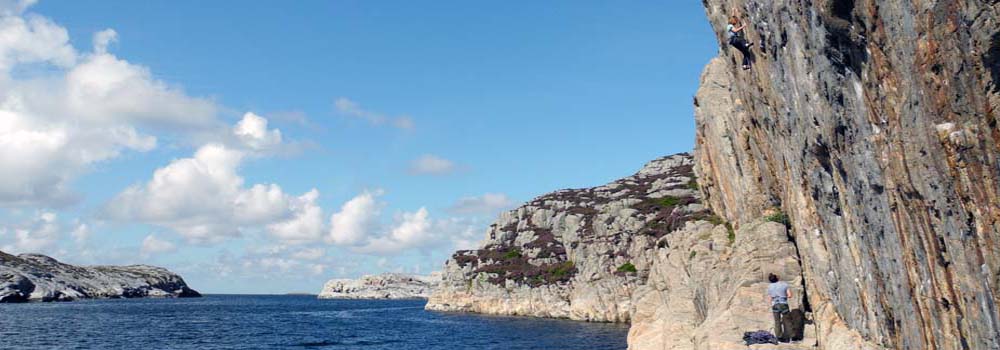|
|
|
page: 1
| 2
| 3
| 4
| 5
| 6
|
|
 |
|
|
After two days climbing we need a rest
day and drive to Oslo to visit the Fram Museum. Fritjof
Nansen sailed with her over the North Polar icefield in 1895 and
Roald Amundsen used it 1912 for his successful expedtion to the South
Pole.
|
|
|
|
|
|
Fram
|
|
After
a short stroll through Oslo we have done enough sight-seeing and head
to Lierskogen 30 km further west. The walls of Damtjern are
scenically set above a beautiful lake.
|
|
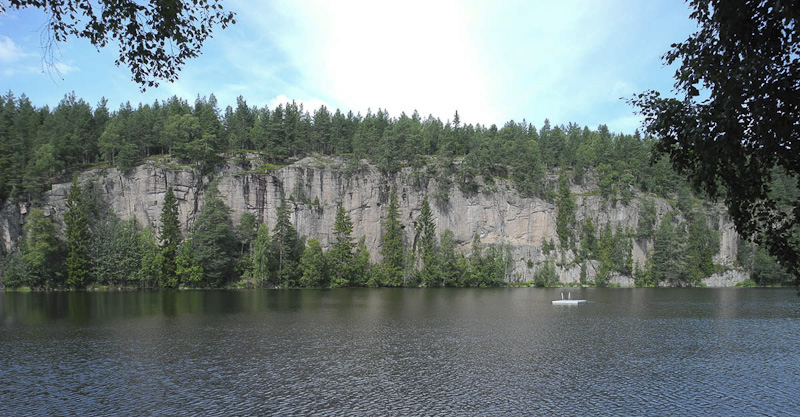 |
|
Damtjern
|
|
The proximity to Oslo is obvious everywhere, the next McDonald with
free Wi-Fi is only 5 minutes away. The hills here in Southern Norway
are covered with fruit plantations. The parking lots are filled with
seasonal workers from Eastern Europe. The days are warm and the lake is
a nice place to be.
Damtjern has about 80 mostly vertical routes between 5b and 8b on
good smooth granite. The wall faces south east and gets into the shade in the
afternoon. We spend the days at the lake and go climbing late in
the afternoon. But the sun is out until 10 p.m. Even here the forests
are full of chanterelles. Sadly our front number plate is stolen. Which
is impossible to replace, because number plates in Norway (and the rest of Scandinavia) are issued centrally by a staterun agency.
From here we drive further west to Notodden, where 10.000
Harley
Davidson drivers meet for the annual blues festival. The weather has changed and
the next day its raining. We go climbing at Reskjem where most
of
its 20 routes stay dry. The climbing is on smooth and slighty
overhanging quarzite. As the rain gets harder most routes start to
seep. So we head back to the van.
|
|
|
|
|
Reskjem
|
|
From here the road to Stavanger follows raging rivers, with wooden Stave churches in small villages and
lichen covered forests. 3000 mm (120 in) anual rainfall are visible
everywhere. The deep valleys were carved by glaciers.
|
|
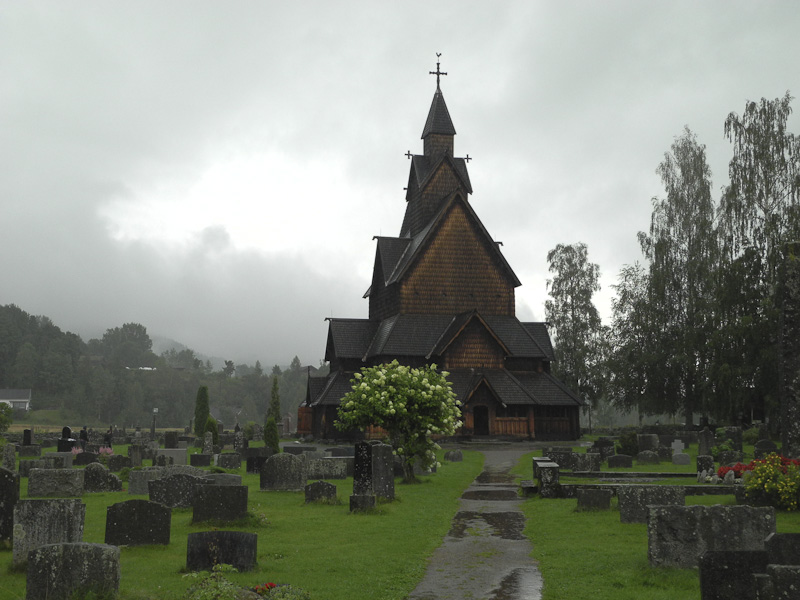 |
|
Stave Church in Heddal
|
|
The roads in this part of Norway are never flat or straight. The most
scenic
stretch is between Dalen and across the plateau into Setesdal. They
valley is littered with seemingly endless tall walls with long routes on slabby granite. Because of a rainy
summer, most routes are wet. There is one sport climbing area here called
Urdviki, but 30 minutes approach is longer than my Achilles tendon
can bear.
|
|
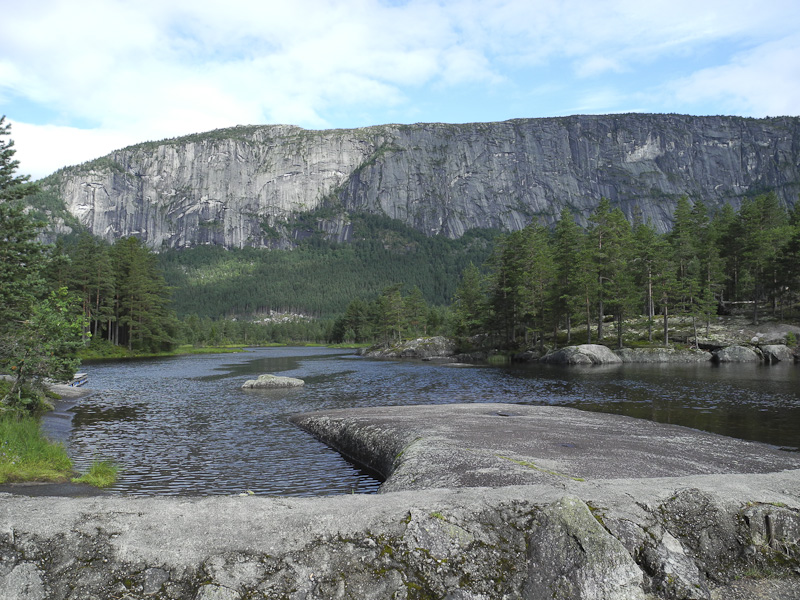 |
|
Granite walls in Setesdal
|
|
Our next stop are the walls of Sirekrok, with 50 routes between 6b
and 8b on compact Syenit. The approach takes 5 minutes. The
routes are very steep and stay dry during rain. But without a good
endurance the lower-offs are out of reach. We meet Johannes and Elin,
two friendly
Norwegians and get an invitation into their hut. The climbing is great
and we stay for 3 days, not bothered by cold and rainy conditions.
|
|
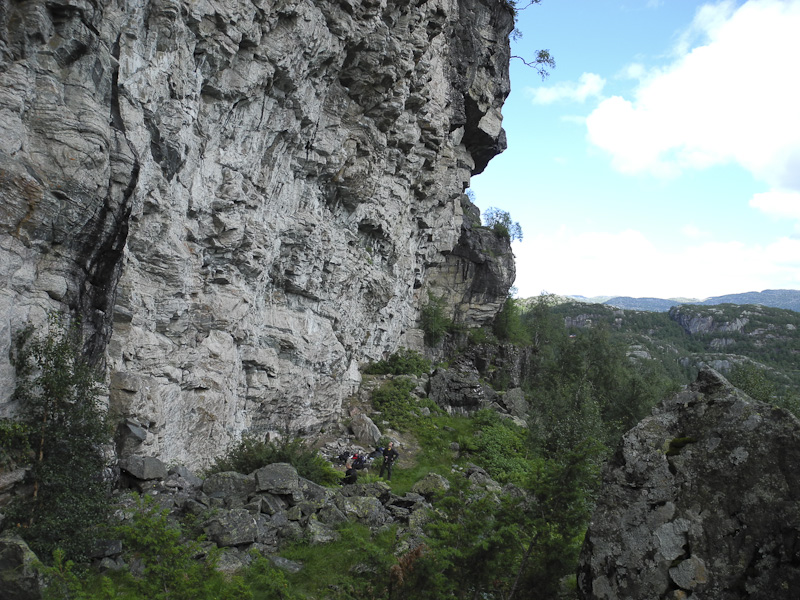 |
|
Sirekrok
|
|
From Sirekrok we drive across bleak plateaus to Lysefjord where the
glaciers of the last ice age have formed more than 1000 m high walls. Below the
waterline the fjord is another 400 m deep.
|
|
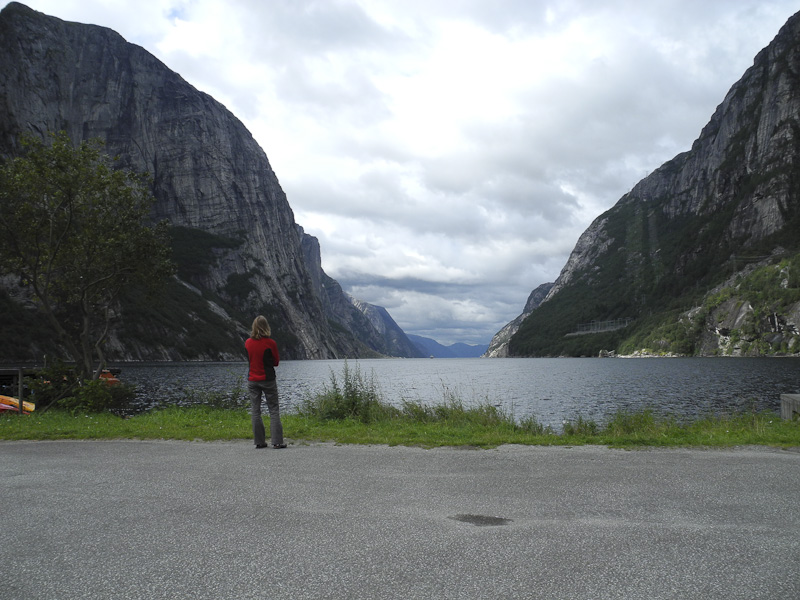 |
|
Lysefjord
|
|
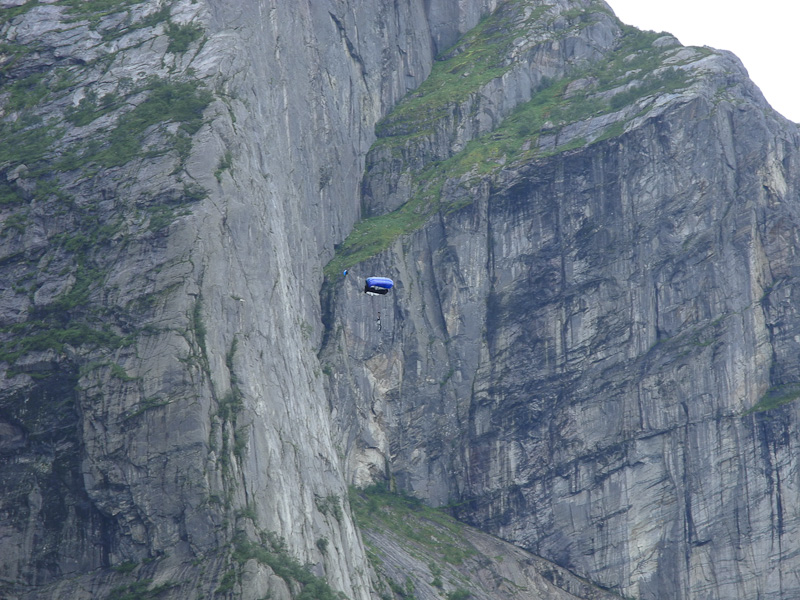 |
|
BASE Jumpers
|
|
We take the ferry to Stavanger and enjoy the views. The walls are so
steep, that Lysefjord gained international reputation as a BASE jumpers
paradise. Within 20 minutes we watch 3 jumps.
|
|
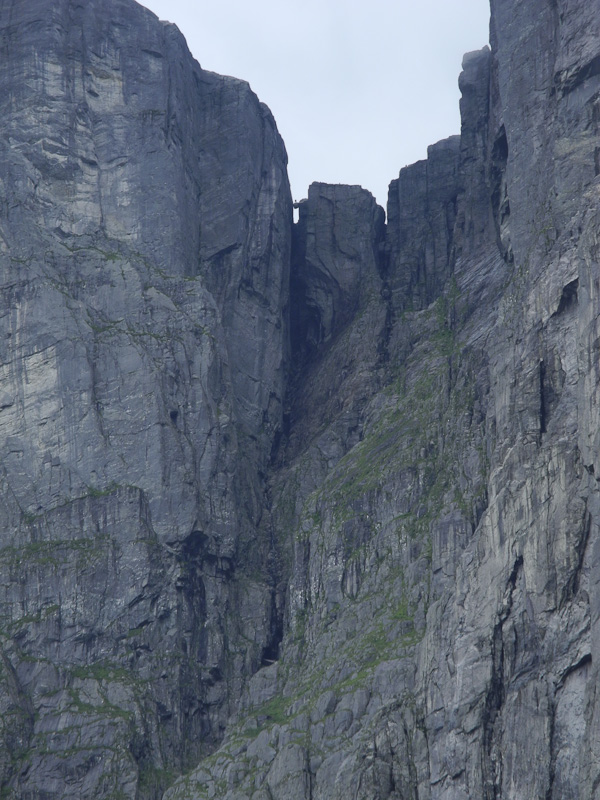 |
|
A lone person on top of Kjerag block 1000
m above us
|
|
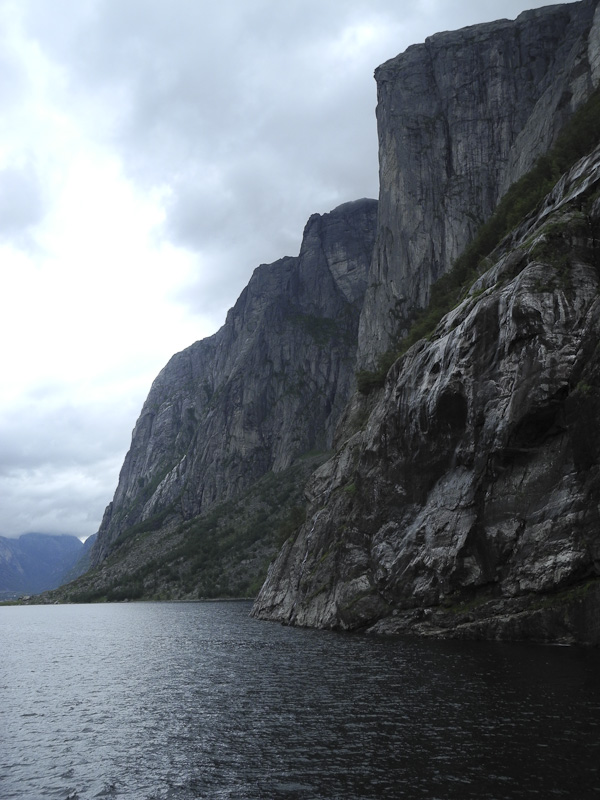 |
|
The walls of Kjerag
|
|
There are many long routes going through these high walls. Maybe I
should come back another year with a whole rack of friends and wires.
|
|
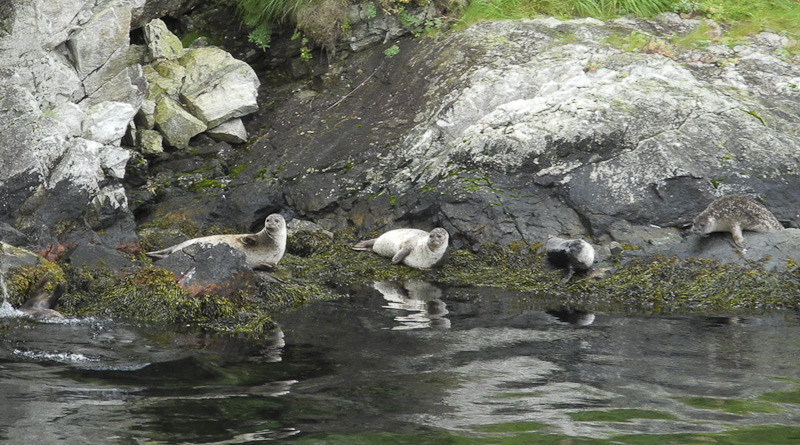 |
|
Seals in
Lysefjord
|
|
 |
|
|
page: 1
| 2
| 3
| 4
| 5
| 6
|
|
